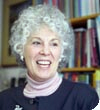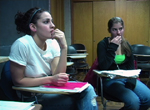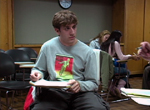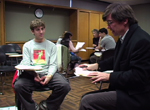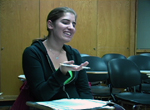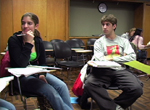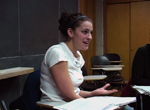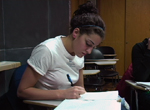In the final meeting of their child study groups, students present rounded portraits of their study child along with a framing question that continues to puzzle
them. I invite outside guests – either a faculty member from the Education Program or an experienced teacher – to chair the small group presentations
and help ensure that a rich conversation takes place. To illustrate the range of presentations, we have included excerpts from presentations by
three students along with some of the discussion which followed.
Each student is clearly using the categories in the Descriptive Review of a Child to frame his or her presentation and each brings a framing question to help focus
the discussion. We see how Dirck Roosevelt helps deepen the discussion by summarizing what he has heard about each child and either helping students reframe
their question in light of the evidence or consider what they might do in the future to support the child’s learning. For example, Dirck suggests that Mike might try
to classify the different questions his study child asks and see whether that helps him understand better the purposes that question asking serves. He encourages
Kim to collect additional examples of times when her study child is engaged in learning so that she can think about ways to create more such occasions. He
recommends that Nicole try to find out how her Spanish speaking study child understands his work as a reader and writer of English.
As I listen to the presentations and discussion, I am struck by how much my students have actually learned about their study child despite the limited time they
spend in the field and how they have taken on a teacher stance as they try to figure out who this child is and how they could better support his or her learning.
I also see how the opportunity to talk with colleagues about individual students opens up new questions, insights and possibilities and I hope that they are
beginning to appreciate the value that comes from colleagues working and learning together.
